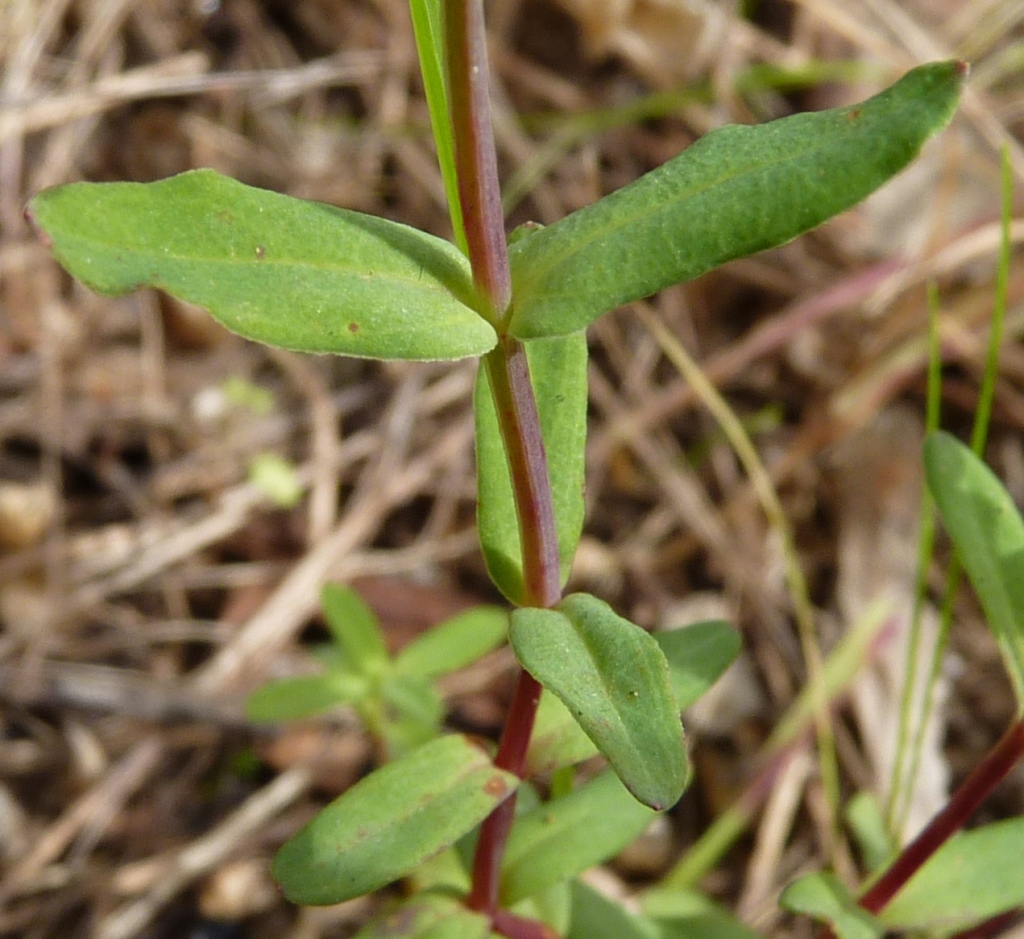Hypericaceae
Woody or herbaceous perennials, mostly glabrous. Leaves opposite, with resin cavities (then appearing punctate) or canals, sessile or subsessile; stipules absent. Flowers terminal, in cymes or solitary, bisexual or unisexual, radially symmetric; bracteoles often present; sepals and petals usually distinct, each usually 4 or 5; stamens usually numerous, sometimes grouped into 2–5 bundles opposite and often adnate to the petals; staminodes sometimes present; anthers opening via longitudinal slits; ovary superior, usually 3–5 locular (rarely unilocular or with up to c. 20 locules); styles as many as locules, free or partly fused, or entirely fused with a lobed or peltate stigma; ovules 2–many per locule. Fruit a longitudinally dehiscent capsule, or a berry or drupe; seeds often with a funicle or an aril.
9 genera containing 560 species, distribution world-wide; 18 (14 natualized) species, all Hypericum, in Australia. Several exotic species, hybrids and cultivars are grown as garden ornamentals.
Formerly treated as part of the Clusiaceae, but these distinguished mainly on sex distribution (Clusiaceae mostly dioecious) and nature of the androecium.
 Spinning
Spinning


